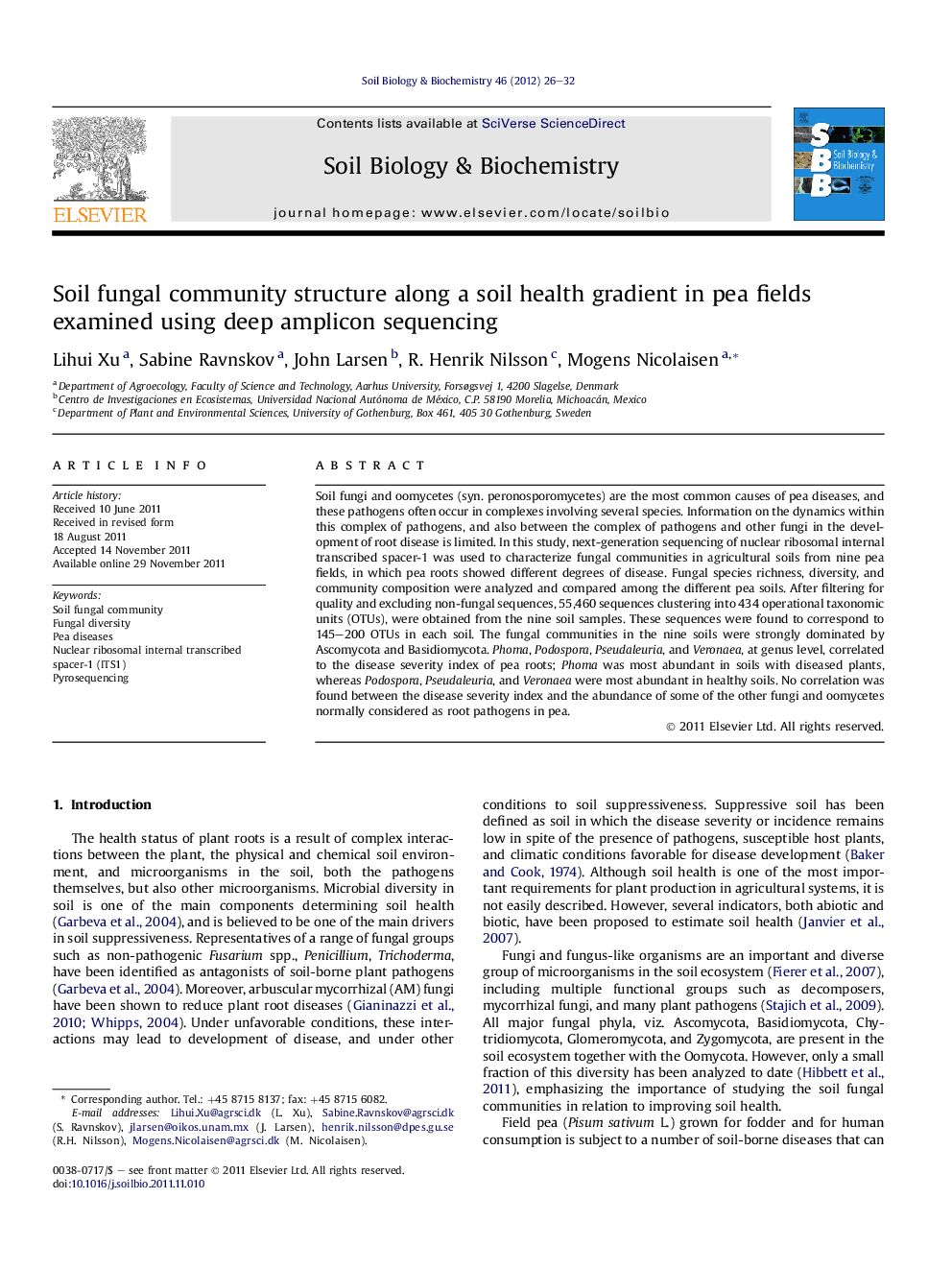| Article ID | Journal | Published Year | Pages | File Type |
|---|---|---|---|---|
| 2025001 | Soil Biology and Biochemistry | 2012 | 7 Pages |
Soil fungi and oomycetes (syn. peronosporomycetes) are the most common causes of pea diseases, and these pathogens often occur in complexes involving several species. Information on the dynamics within this complex of pathogens, and also between the complex of pathogens and other fungi in the development of root disease is limited. In this study, next-generation sequencing of nuclear ribosomal internal transcribed spacer-1 was used to characterize fungal communities in agricultural soils from nine pea fields, in which pea roots showed different degrees of disease. Fungal species richness, diversity, and community composition were analyzed and compared among the different pea soils. After filtering for quality and excluding non-fungal sequences, 55,460 sequences clustering into 434 operational taxonomic units (OTUs), were obtained from the nine soil samples. These sequences were found to correspond to 145–200 OTUs in each soil. The fungal communities in the nine soils were strongly dominated by Ascomycota and Basidiomycota. Phoma, Podospora, Pseudaleuria, and Veronaea, at genus level, correlated to the disease severity index of pea roots; Phoma was most abundant in soils with diseased plants, whereas Podospora, Pseudaleuria, and Veronaea were most abundant in healthy soils. No correlation was found between the disease severity index and the abundance of some of the other fungi and oomycetes normally considered as root pathogens in pea.
► NGS revealed diverse fungal communities in soils with diseased and healthy pea. ► P. medicaginis was the most abundant species and correlated to the DSI of pea roots. ► Phoma, Podospora, Pseudaleuria, and Veronaea all correlated to the DSI of pea roots.
